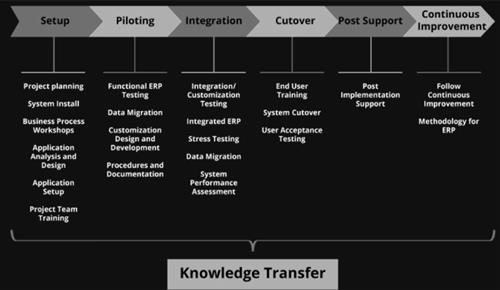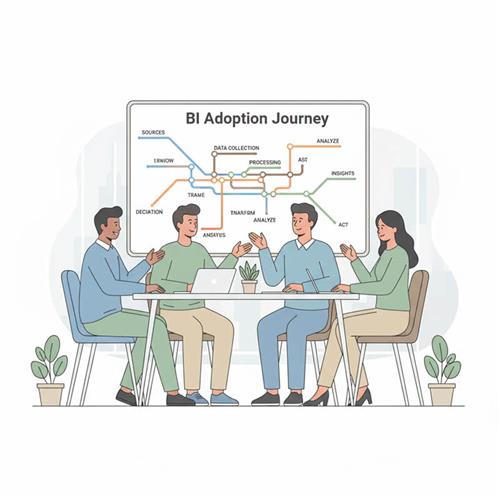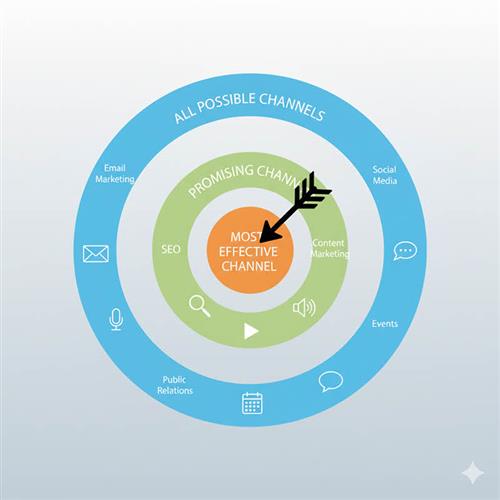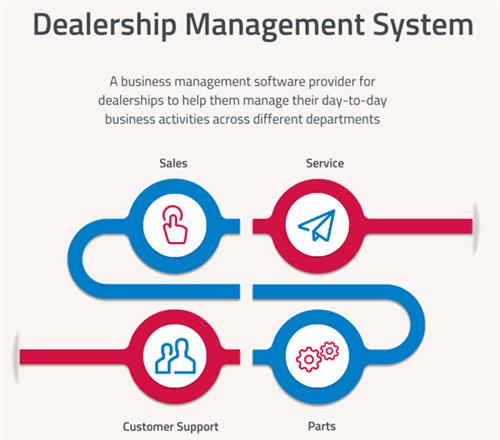
Reimagining the Future: The State of Digital Transformation in Japan
Last updated: October 13, 2024 Read in fullscreen view
- 07 Jul 2024
 Top Fintech Companies in Vietnam Driving Innovation Across Digital Banking & Investment 28/44
Top Fintech Companies in Vietnam Driving Innovation Across Digital Banking & Investment 28/44 - 09 Oct 2022
 Rapid Application Development Case Study - TIGO Consulting 23/570
Rapid Application Development Case Study - TIGO Consulting 23/570 - 01 May 2023
 Understanding Business as Usual (BAU) and How to Transition 22/843
Understanding Business as Usual (BAU) and How to Transition 22/843 - 01 Nov 2023
 Difference between Vendor and Subcontractor 12/923
Difference between Vendor and Subcontractor 12/923 - 15 Oct 2022
 Project-based team model for one-off and pilot software development projects 10/730
Project-based team model for one-off and pilot software development projects 10/730 - 24 Nov 2025
 Top Blockchain Companies in Vietnam 10/27
Top Blockchain Companies in Vietnam 10/27 - 05 Aug 2025
 Why Doesn’t South Korea Outsource Its IT Projects Like Other Developed Countries? 10/83
Why Doesn’t South Korea Outsource Its IT Projects Like Other Developed Countries? 10/83 - 03 Oct 2020
 Outsourcing Your MVP Development - Streamlined Solutions for future 9/400
Outsourcing Your MVP Development - Streamlined Solutions for future 9/400 - 21 Aug 2025
 Top 30 Oldest IT Outsourcing Companies in Vietnam 7/89
Top 30 Oldest IT Outsourcing Companies in Vietnam 7/89 - 10 Aug 2024
 Odoo vs. Lark: A Comprehensive Comparison 7/683
Odoo vs. Lark: A Comprehensive Comparison 7/683 - 31 Oct 2025
 The True ROI of Software Development Outsourcing for Tech Startups 7/58
The True ROI of Software Development Outsourcing for Tech Startups 7/58 - 24 Nov 2021
 What is the Actual Cost of Hiring Cheap Developers? 6/348
What is the Actual Cost of Hiring Cheap Developers? 6/348 - 22 Mar 2022
 8 Mistakes Marketing Agencies or Consulting Firms Make When Outsourcing Web Development 6/324
8 Mistakes Marketing Agencies or Consulting Firms Make When Outsourcing Web Development 6/324 - 10 May 2021
 Project Audit and Second Opinion Services 6/236
Project Audit and Second Opinion Services 6/236 - 05 Aug 2024
 Revisiting the Mistake That Halted Japan's Software Surge 6/322
Revisiting the Mistake That Halted Japan's Software Surge 6/322 - 14 Aug 2024
 From Steel to Software: The Reluctant Evolution of Japan's Tech Corporates 6/488
From Steel to Software: The Reluctant Evolution of Japan's Tech Corporates 6/488 - 30 Dec 2022
 Top 6 Reasons to Partner with TIGOSOFT 5/234
Top 6 Reasons to Partner with TIGOSOFT 5/234 - 11 Mar 2023
 Common Pain Points in Software Development Outsourcing 5/227
Common Pain Points in Software Development Outsourcing 5/227 - 05 Jan 2022
 What Outsourcing Engagement Model is Right For You? 5/290
What Outsourcing Engagement Model is Right For You? 5/290 - 12 May 2021
 The Real Cost Between Outsourcing IT vs In-House: A Quick Comparison 5/401
The Real Cost Between Outsourcing IT vs In-House: A Quick Comparison 5/401 - 25 Sep 2025
 A Practical Guide to Secure Online Work for Outsourced Teams 5/56
A Practical Guide to Secure Online Work for Outsourced Teams 5/56 - 09 Jan 2021
 How can outsourcing enable business agility? 4/178
How can outsourcing enable business agility? 4/178 - 14 Dec 2021
 The Top 10 Problems with Outsourcing Implementation and How to Solve Them 4/376
The Top 10 Problems with Outsourcing Implementation and How to Solve Them 4/376 - 02 May 2021
 Outsourcing Software Development: Avoid 8 Mistakes 4/89
Outsourcing Software Development: Avoid 8 Mistakes 4/89 - 06 Feb 2024
 What are benefits and drawbacks of co-creating solutions with your clients? 4/216
What are benefits and drawbacks of co-creating solutions with your clients? 4/216 - 01 Jan 2024
 Software Outsourcing Questions for 2024 3/145
Software Outsourcing Questions for 2024 3/145 - 01 Jan 2024
 12 reasons for software development outsourcing 3/146
12 reasons for software development outsourcing 3/146 - 01 Jan 2024
 Tech Partnerships: Choosing the Right Software Outsourcing Firm in Vietnam 3/165
Tech Partnerships: Choosing the Right Software Outsourcing Firm in Vietnam 3/165 - 08 Oct 2024
 Vietnam: The Rising Star in Global Outsourcing – Trends and Costs for 2025 3/289
Vietnam: The Rising Star in Global Outsourcing – Trends and Costs for 2025 3/289 - 01 Jan 2023
 4 New IT Outsourcing Pricing Models to consider in 2023 3/323
4 New IT Outsourcing Pricing Models to consider in 2023 3/323 - 12 Jan 2023
 Top 10 Trustworthy IT Outsourcing Companies in Vietnam 3/262
Top 10 Trustworthy IT Outsourcing Companies in Vietnam 3/262 - 01 Jan 2023
 Why is Vietnam the Top IT Outsourcing Destination of 2023? 3/202
Why is Vietnam the Top IT Outsourcing Destination of 2023? 3/202 - 16 Dec 2021
 Why outsource Python development of your project? 3/444
Why outsource Python development of your project? 3/444 - 19 Mar 2021
 Selective Outsourcing of IT Functions - a new trend in business outsourcing 3/495
Selective Outsourcing of IT Functions - a new trend in business outsourcing 3/495 - 21 Oct 2021
 Advantages and Disadvantages of IT Outsourcing 3/321
Advantages and Disadvantages of IT Outsourcing 3/321 - 07 Nov 2024
 Outsourcing Crisis Looming: Will Trump's Policies Transform the Global IT Landscape? 3/157
Outsourcing Crisis Looming: Will Trump's Policies Transform the Global IT Landscape? 3/157 - 03 May 2024
 The Iceberg of Ignorance 3/336
The Iceberg of Ignorance 3/336 - 08 Feb 2024
 Case Study: How and why I built Japan Dev? 2/196
Case Study: How and why I built Japan Dev? 2/196 - 17 Oct 2020
 How Outsourcing can Improve Time Management for Better Business 2/184
How Outsourcing can Improve Time Management for Better Business 2/184 - 10 May 2021
 What are things you should look for in a good IT outsourcing company? 2/405
What are things you should look for in a good IT outsourcing company? 2/405 - 28 Oct 2022
 Expect the unexpected in 2023 - How Outsourcing Can Help? 2/184
Expect the unexpected in 2023 - How Outsourcing Can Help? 2/184 - 04 Jan 2021
 VIETNAM AS A BIG ATTRACTIVE DESTINATION IN THE FIELD OF OUTSOURCING 2/276
VIETNAM AS A BIG ATTRACTIVE DESTINATION IN THE FIELD OF OUTSOURCING 2/276 - 08 Feb 2022
 Software Development: Fixed Cost or Opportunity Cost? 2/444
Software Development: Fixed Cost or Opportunity Cost? 2/444 - 01 Sep 2019
 Outsourcing Software To Vietnam: Facts, benefits and limitations 2/392
Outsourcing Software To Vietnam: Facts, benefits and limitations 2/392 - 01 Jan 2023
 Software Development Outsourcing Trends to Watch Out for in 2023 2/268
Software Development Outsourcing Trends to Watch Out for in 2023 2/268 - 01 Oct 2022
 Vietnam is a favorite supply of IT outsourcing services to Japan 2/230
Vietnam is a favorite supply of IT outsourcing services to Japan 2/230 - 06 Oct 2021
 Intellectual property issues with outsourcing software development 2/364
Intellectual property issues with outsourcing software development 2/364 - 21 Oct 2022
 Outsourcing Billable Rate 2/244
Outsourcing Billable Rate 2/244 - 03 Nov 2021
 7 phases of Odoo Implementation and Development: Can they be outsourced? 2/357
7 phases of Odoo Implementation and Development: Can they be outsourced? 2/357 - 11 Jan 2024
 Entering the Japanese Market: Stacking the Deck and Setting Expectations 2/125
Entering the Japanese Market: Stacking the Deck and Setting Expectations 2/125 - 17 Jan 2024
 What are the benefits and challenges of using multi-sourcing or single-sourcing strategies? 1/157
What are the benefits and challenges of using multi-sourcing or single-sourcing strategies? 1/157 - 10 Jan 2024
 Facts Chart: Reasons for outsourcing 1/132
Facts Chart: Reasons for outsourcing 1/132 - 04 Apr 2024
 Unlock Vietnamese-Japanese outsourcing potential 1/214
Unlock Vietnamese-Japanese outsourcing potential 1/214 - 01 Jan 2024
 Hiring Tech Talents in Asia: An Overview of Skills, Costs, and Potential 1/148
Hiring Tech Talents in Asia: An Overview of Skills, Costs, and Potential 1/148 - 02 Sep 2024
 Toolzoon Review: Features, Benefits, and Essential Tools for Enhanced Productivity 1/180
Toolzoon Review: Features, Benefits, and Essential Tools for Enhanced Productivity 1/180 - 01 Jan 2024
 What The World Is Flat Means to IT Outsourcing 1/157
What The World Is Flat Means to IT Outsourcing 1/157 - 02 Nov 2023
 What are the pros and cons of iIT outsourcing? 1/184
What are the pros and cons of iIT outsourcing? 1/184 - 01 May 2023
 Streamline Your Business with Outsourcing 1/168
Streamline Your Business with Outsourcing 1/168 - 02 Mar 2021
 Estimate the Cost of Software Development 1/312
Estimate the Cost of Software Development 1/312 - 01 Mar 2022
 Top 5 reasons why outsourcing to Vietnam is a smart move 1/262
Top 5 reasons why outsourcing to Vietnam is a smart move 1/262 - 01 Apr 2021
 IT Outsourcing to vietnam: Why It Is A Good Choice? 1/258
IT Outsourcing to vietnam: Why It Is A Good Choice? 1/258 - 09 Sep 2022
 Close Collaboration and Communication Can Overcome the Challenges of Distributed Teams 1/129
Close Collaboration and Communication Can Overcome the Challenges of Distributed Teams 1/129 - 13 Jan 2023
 What are the Hourly Rates in Offshore Software Development? 1/223
What are the Hourly Rates in Offshore Software Development? 1/223 - 03 Jan 2023
 IT Outsourcing Costs: Is outsourcing really cost-effective? 1/185
IT Outsourcing Costs: Is outsourcing really cost-effective? 1/185 - 31 Dec 2021
 Outsourcing Software Development to mitigate the impact of COVID-19 1/289
Outsourcing Software Development to mitigate the impact of COVID-19 1/289 - 21 Aug 2022
 Forbes: IT Outsourcing Hotspot: Vietnam, A Small But Mighty Powerhouse 1/240
Forbes: IT Outsourcing Hotspot: Vietnam, A Small But Mighty Powerhouse 1/240 - 15 Aug 2021
 TIGO Rate Formula - Things the partners should know 1/418
TIGO Rate Formula - Things the partners should know 1/418 - 08 Aug 2021
 Why Nearshore Software Development is better than In-House Development? 1/174
Why Nearshore Software Development is better than In-House Development? 1/174 - 13 Oct 2021
 Why Outsourcing Software Development Services Is Gaining Traction With Non-Technical Leaders? 1/299
Why Outsourcing Software Development Services Is Gaining Traction With Non-Technical Leaders? 1/299 - 01 Jun 2025
 10 Sustainable & Unique IT Outsourcing Companies in Vietnam 1/58
10 Sustainable & Unique IT Outsourcing Companies in Vietnam 1/58 - 11 Mar 2024
 Why You Should Hire Odoo Developers from Vietnam to Customize Your ERP System 1/89
Why You Should Hire Odoo Developers from Vietnam to Customize Your ERP System 1/89 - 15 Aug 2025
 Quantum Technology: Global Challenges and Opportunities for Innovators /56
Quantum Technology: Global Challenges and Opportunities for Innovators /56 - 21 Oct 2024
 Simplify Your Workflow with an AI Summary Generator /101
Simplify Your Workflow with an AI Summary Generator /101 - 05 Oct 2021
 Shiny Object Syndrome: Why Your Business Isn't "Going Digital" /303
Shiny Object Syndrome: Why Your Business Isn't "Going Digital" /303 - 12 Oct 2021
 Vietnam outsourcing path - the silk road connecting ASEAN with the developed countries (EU, US, Japan...) /282
Vietnam outsourcing path - the silk road connecting ASEAN with the developed countries (EU, US, Japan...) /282 - 19 Oct 2020
 The hidden costs of outsourcing software development /434
The hidden costs of outsourcing software development /434 - 03 Nov 2022
 Top questions and answers you must know before ask for software outsourcing /264
Top questions and answers you must know before ask for software outsourcing /264 - 16 Mar 2021
 Outsource Data Engineering Services - TIGO Streamlined Solutions /234
Outsource Data Engineering Services - TIGO Streamlined Solutions /234 - 09 Jun 2022
 Case Study: PRODUCT LAUNCH WITH AGILE METHODOLOGY /286
Case Study: PRODUCT LAUNCH WITH AGILE METHODOLOGY /286 - 25 Nov 2021
 Low-Cost Software Development: Buy Nice or Buy Twice? /278
Low-Cost Software Development: Buy Nice or Buy Twice? /278 - 10 Mar 2021
 The 7 Biggest Mistakes to Avoid Before Outsourcing a Web Development Project /224
The 7 Biggest Mistakes to Avoid Before Outsourcing a Web Development Project /224 - 01 Jan 2023
 Top 5 IT outsourcing countries in 2023 /254
Top 5 IT outsourcing countries in 2023 /254 - 08 Jan 2024
 Outsourcing on an As-Needed Basis /144
Outsourcing on an As-Needed Basis /144 - 15 Nov 2023
 IT Staff Augmentation Types and the Best Choice for Your Business /155
IT Staff Augmentation Types and the Best Choice for Your Business /155 - 01 Jan 2023
 Top Software Development Challenges in 2023 /275
Top Software Development Challenges in 2023 /275 - 01 Feb 2023
 [InfoWorld] Is your outsourcer agile enough? /182
[InfoWorld] Is your outsourcer agile enough? /182
Digital transformation is reshaping economies worldwide, yet Japan, a country known for its technological advancements, faces unique challenges in this area. Despite being a global leader in robotics, manufacturing, and electronics, Japan's digital transformation lags in critical sectors like public services, finance, and small-to-medium enterprises (SMEs). To understand the current state of digital transformation in Japan, we must explore the root causes, cultural and human-related challenges, and potential solutions. In particular, collaboration with developing countries such as Vietnam and the Philippines, with their young, dynamic populations, can be a crucial part of Japan’s future digital strategy.
Root Causes of Japan’s Digital Lag
- Aging Population and Workforce: Japan's population is rapidly aging, with nearly 30% of its citizens over 65 years old. This demographic trend has far-reaching implications for digital adoption. Many older workers are less inclined or comfortable using modern digital tools, leading to slower integration of technology in both the public and private sectors. Moreover, Japan's shrinking workforce makes it harder to find young, tech-savvy talent, a key driver of digital innovation.
- Bureaucratic Rigidities: The Japanese government is known for its strict hierarchies and heavy reliance on paperwork. This has created a slow-moving bureaucracy that resists change, especially when it involves the adoption of new technologies. For instance, the persistence of fax machines in government offices is a symbol of Japan's digital inertia. These bureaucratic rigidities stifle innovation and delay the modernization of public services.
- Risk-averse Corporate Culture: Japanese businesses, especially large corporations, are notorious for their risk-averse approach. The preference for stability over disruptive innovation has limited the adoption of emerging technologies like artificial intelligence (AI), cloud computing, and blockchain. Moreover, traditional corporate structures emphasize seniority over merit, which can marginalize younger employees with fresh, digital-first ideas.
- Educational System: Japan’s educational system, while rigorous, emphasizes rote memorization over creative thinking and digital literacy. This has resulted in a workforce proficient in specific tasks but less adept at the kind of innovative, problem-solving mindset that drives successful digital transformation.
Cultural and Human-related Challenges
- Reluctance to Change: Japan's strong cultural emphasis on harmony and consensus can hinder rapid digital adoption. Many employees are uncomfortable with the disruption caused by digital transformation, fearing it may challenge traditional roles and hierarchies. This cultural resistance often leads to incremental changes rather than the bold, sweeping innovations necessary for true digital transformation.
- Work Ethic and Long Hours: The Japanese work culture, characterized by long hours and a deep commitment to the company, often leaves little room for learning new technologies or exploring innovative approaches. The focus on hard work over efficiency can discourage the adoption of digital tools that could streamline processes and reduce workloads.
- Lack of Digital Literacy: While Japan has a high level of technological infrastructure, digital literacy among the general population remains relatively low. Many workers, especially older generations, are not familiar with advanced digital tools, which limits their ability to engage in and benefit from digital transformation.
Proposed Solutions for Japan’s Digital Transformation
- Government-Led Reforms: The Japanese government has recognized the need for change and is taking steps to promote digital transformation. The establishment of the Digital Agency in 2021 is a positive step, but more aggressive measures are needed. Streamlining government processes, digitizing public services, and incentivizing digital adoption across industries are crucial to ensuring widespread transformation.
- Corporate Culture Shift: Japanese companies must foster a culture that embraces risk and innovation. This involves flattening hierarchical structures, promoting diversity in leadership, and encouraging younger employees to take on more leadership roles in driving digital projects. Investing in digital upskilling programs for workers of all ages is also essential.
- Educational Reforms: Japan's education system must evolve to emphasize creativity, problem-solving, and digital skills. Introducing more coding, AI, and data science courses in schools, as well as fostering entrepreneurship, will prepare the next generation of workers for a digital future.
- Global Collaboration: Japan can accelerate its digital transformation by partnering with countries that have large, youthful, and dynamic populations, such as Vietnam and the Philippines. These countries boast tech-savvy, energetic workforces eager to innovate and adapt to new digital trends. By outsourcing digital development tasks or collaborating on tech projects, Japan can leverage the strengths of these nations while simultaneously addressing its own workforce shortages.
Collaboration with Vietnam and the Philippines
Vietnam and the Philippines, with their rapidly growing economies and youthful populations, represent ideal partners for Japan in its digital journey. Both countries have embraced digital technology, with burgeoning tech sectors and a high level of digital literacy among younger generations.
- Labor Force Synergy: Japan's aging workforce could benefit greatly from the youthful energy and digital expertise in countries like Vietnam and the Philippines. By fostering partnerships in technology and digital services, Japan can tap into these nations' growing pools of talented developers, engineers, and tech entrepreneurs.
- Innovation Hubs: Japan can collaborate with these countries to create innovation hubs focused on digital development. These hubs could be centers of innovation in AI, software development, fintech, and other emerging fields, benefiting both Japan and its partner nations.
- Cultural Exchange and Learning: By collaborating with countries that have more agile, entrepreneurial approaches to technology, Japan can learn valuable lessons about the benefits of flexibility, creativity, and rapid digital adoption. This cultural exchange could also help Japan overcome some of the internal cultural barriers hindering its own digital transformation.
Conclusion
Japan’s digital transformation is at a crossroads. While it has the technological foundation to lead in the digital age, cultural, demographic, and bureaucratic barriers are slowing its progress. By embracing government reforms, encouraging a shift in corporate culture, and fostering global partnerships with developing nations like Vietnam and the Philippines, Japan can unlock its full potential in the digital era. These collaborations can offer a mutually beneficial exchange of talent, energy, and innovation, enabling Japan to remain competitive in a rapidly changing global landscape.
By TIGO Team


































 Link copied!
Link copied!